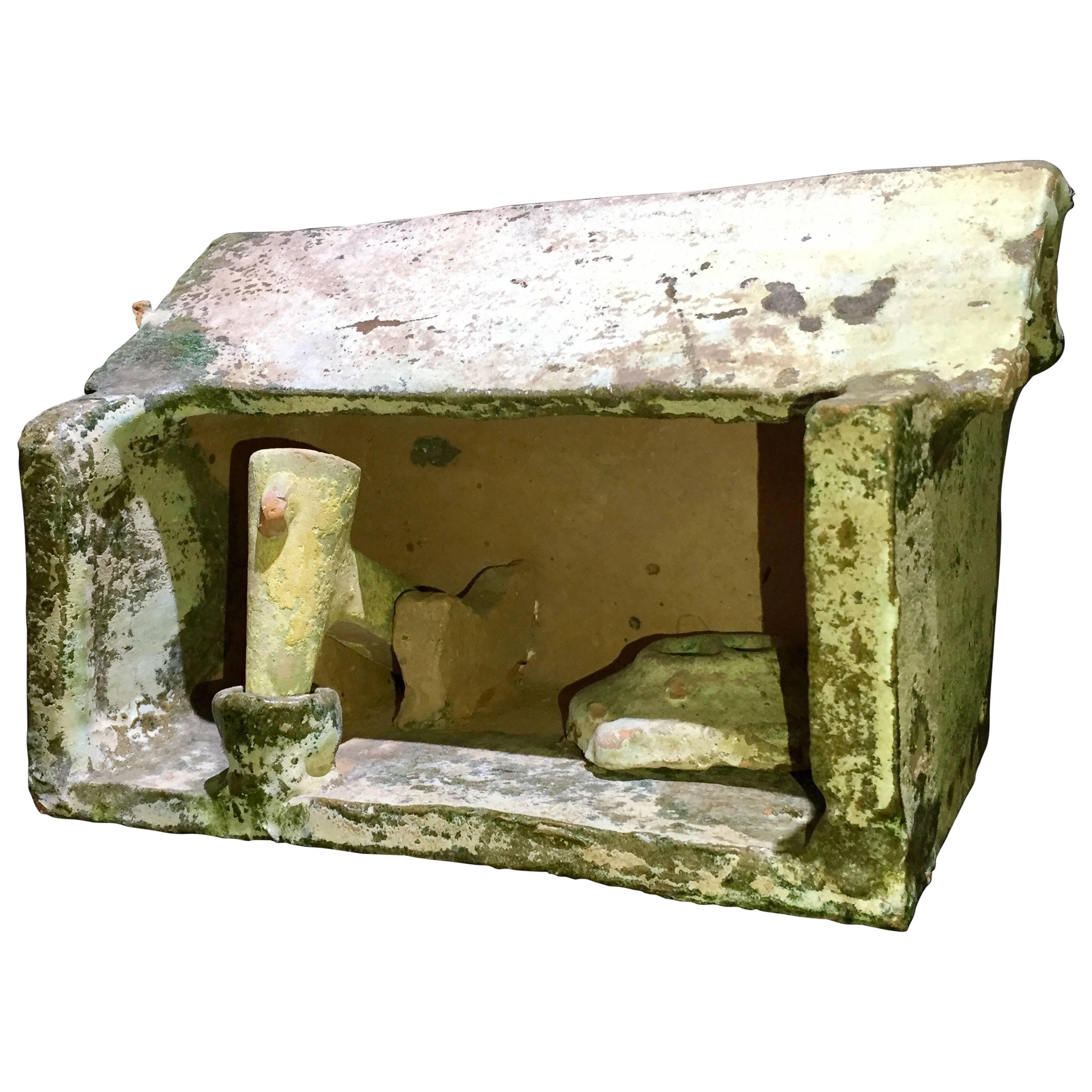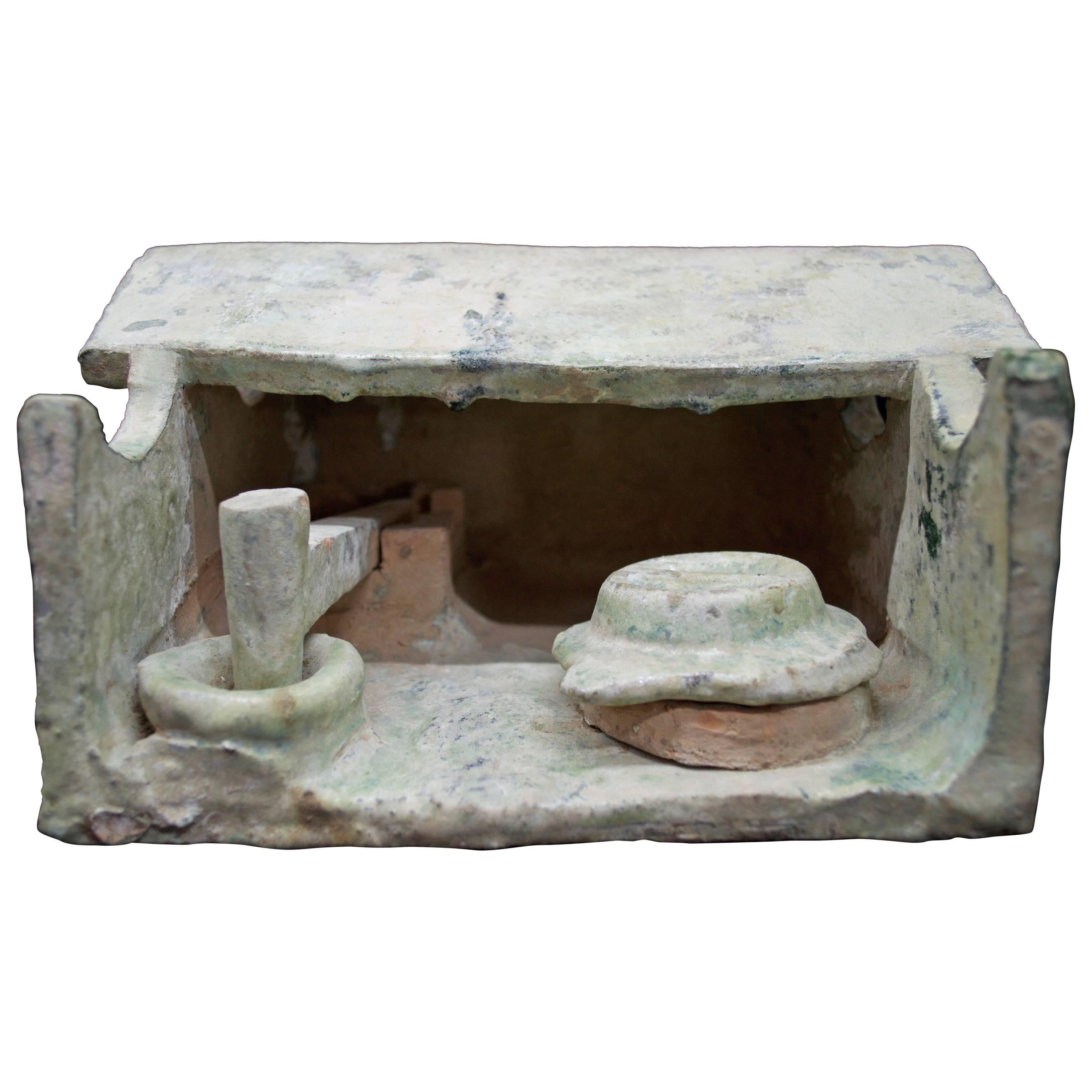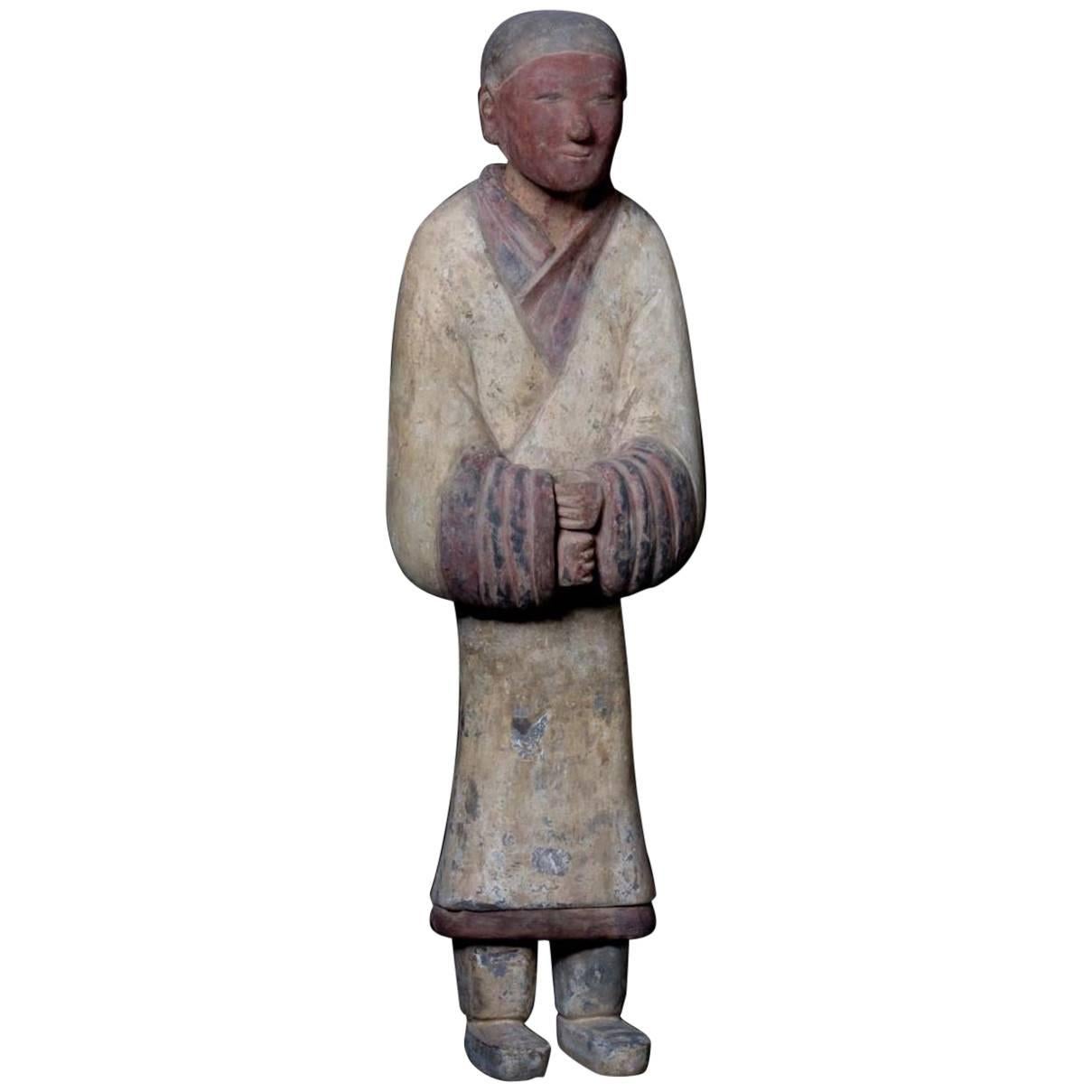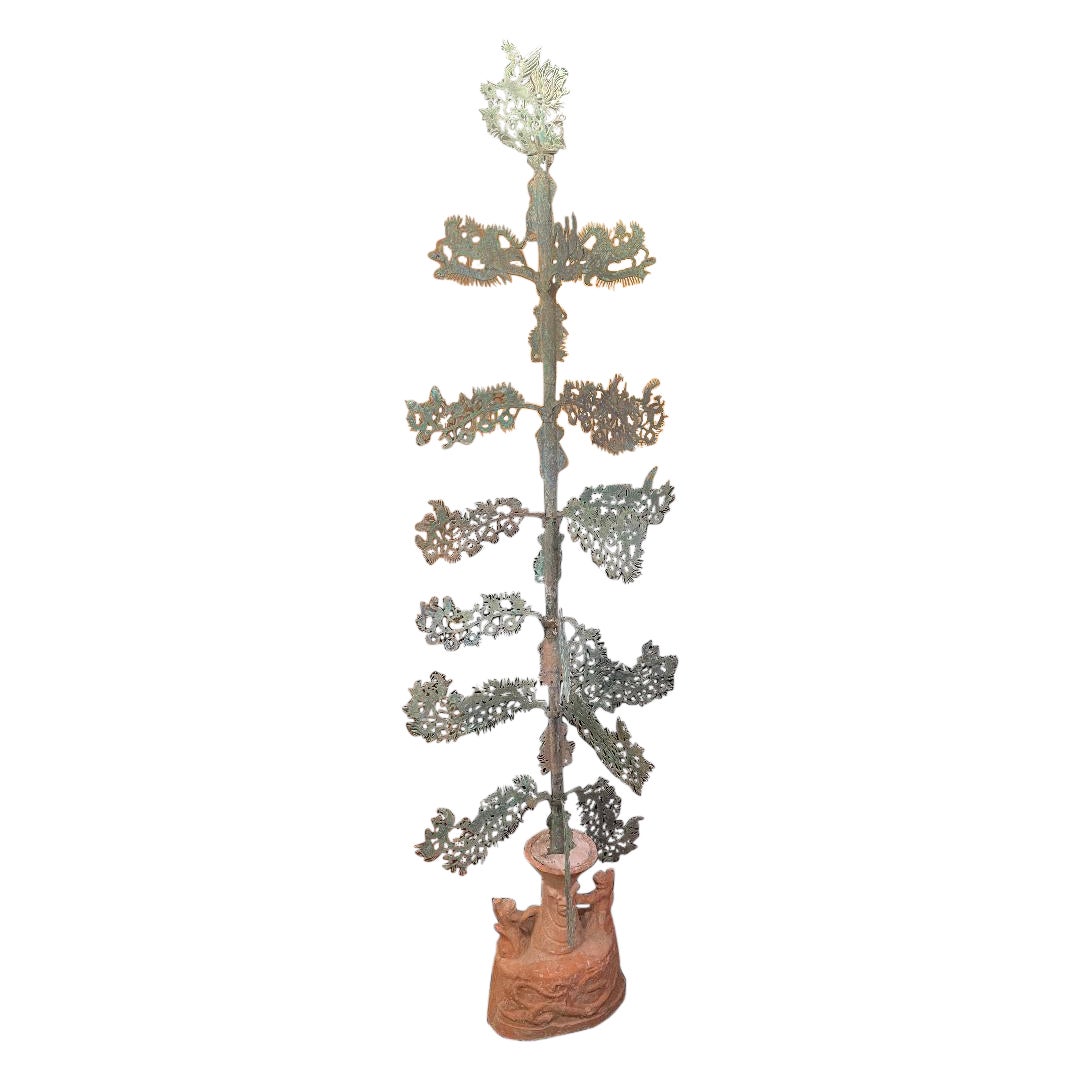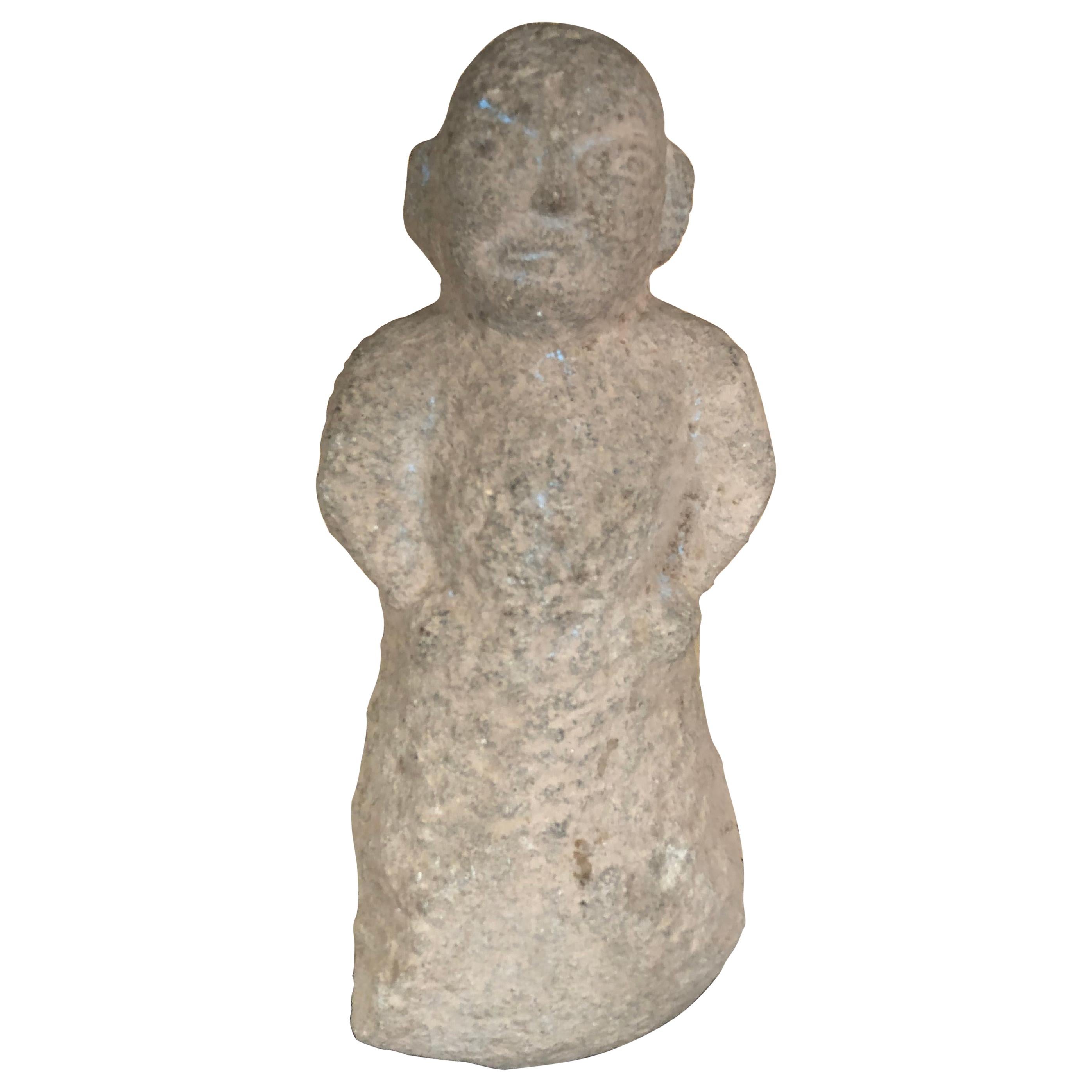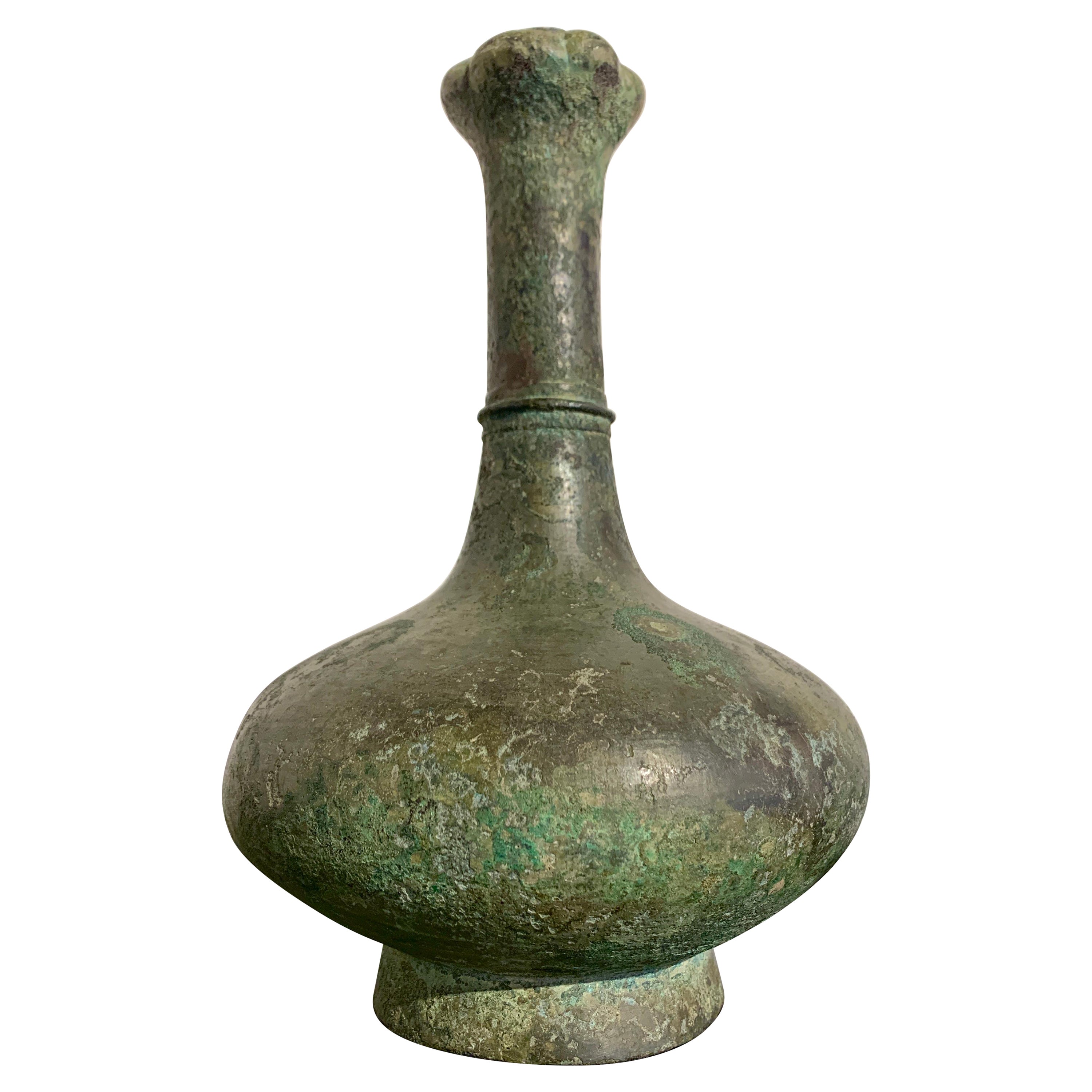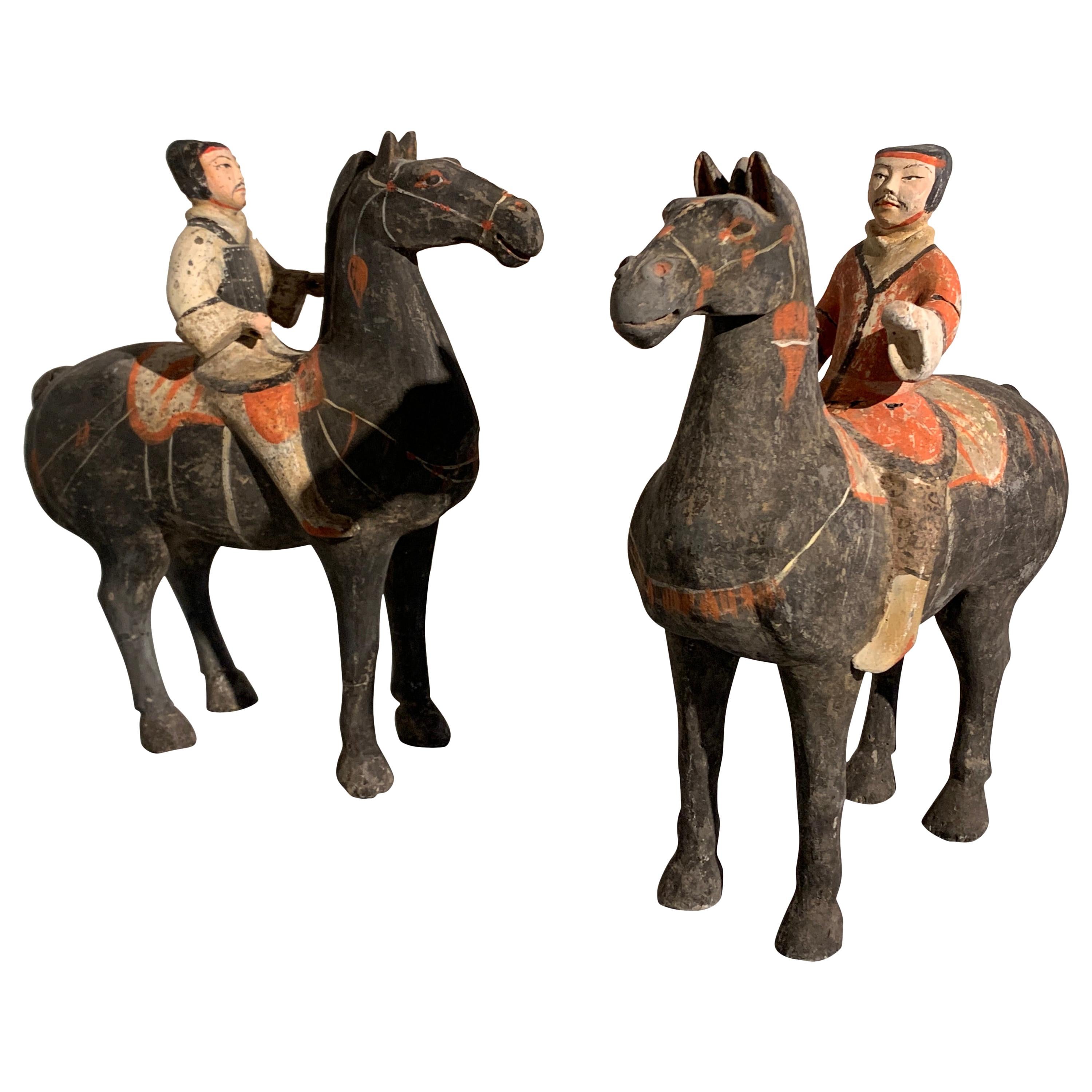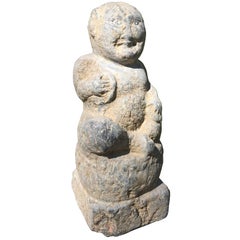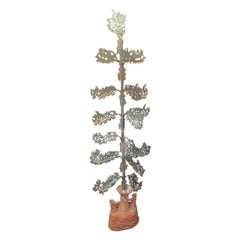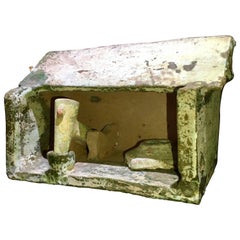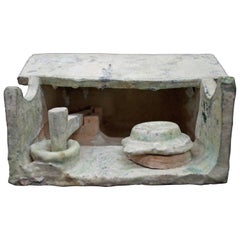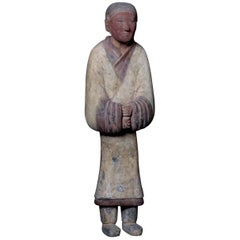
Important Ancient China Pair of Jade Pig Pendants Eastern Han Dynasty, 25-206 AD
View Similar Items
Want more images or videos?
Request additional images or videos from the seller
1 of 20
Important Ancient China Pair of Jade Pig Pendants Eastern Han Dynasty, 25-206 AD
About the Item
- Dimensions:Height: 1 in (2.54 cm)Width: 4.12 in (10.47 cm)Depth: 1 in (2.54 cm)
- Style:Han (Of the Period)
- Materials and Techniques:
- Place of Origin:
- Period:
- Date of Manufacture:25-220 AD
- Condition:Wear consistent with age and use.
- Seller Location:South Burlington, VT
- Reference Number:1stDibs: LU1289213309572
About the Seller
5.0
Gold Seller
These expertly vetted sellers are highly rated and consistently exceed customer expectations.
Established in 1990
1stDibs seller since 2015
2,214 sales on 1stDibs
Typical response time: 1 hour
More From This SellerView All
- Ancient China Monumental Stone Ram Han Dynasty, 206BC-220ADLocated in South Burlington, VTChina, a large votive model of a stone ram, Han dynasty (206BC-220AD) Dimensions: 45cm, 18 inches high and 65cm, 26 inches length and 25cm, 10 inches wi...Category
Antique 15th Century and Earlier Chinese Han Sculptures and Carvings
MaterialsLimestone
- China Ancient Stone Entertainer, Han Dynasty 200 ADLocated in South Burlington, VTChina an ancient limestone figure of an Entertainer replete with hands holding tambourines and a top a drum, -for the afterlife- , Han dynasty 206 BC...Category
Antique 15th Century and Earlier Chinese Han Sculptures and Carvings
MaterialsLimestone
- Important Chinese Ancient Bronze Money Tree, 25BC-220ADLocated in South Burlington, VTChina, Ancient Bronze “Money Tree” Yaoqian Shu with original pottery base, Han dynasty (25 BCE – 220 CE) Dimensions: 155cm, 62 inches high A sculpted terracotta pottery base in the form of a tortoise with attendants and inserted with five individual bronze pole segments with twenty four individual hanging bronze open work money “branches” attached in tiers, four per tier and topped with a figure of a bronze phoenix as apex most bearing varying degrees of malachite and azurite encrustation from ancient burial. Important Description Details: Pottery "tortoise" base: 14.5" high and 11" wide Bronze sections: 7pcs pole bronze sections approximately 8" length each 1pc top "phoenix" bronze section approximately 7" high and 6" wide 20 pcs long bronze hanging wings approximately 10" long and 5" wide each 4 pcs short bronze hanging wings (near top) approximately 7" long and 4" wide each Total 32 pcs with ancient green and blue azurite patina. Catalog reference: Schneible Fine arts catalog - 35 Years Collecting Treasures- Number 11p. 28 (see photos) Provenance: Provenance: Private family collection formerly exhibited “Asia Week” New York City, Fuller Building, Zabriskie Gallery, 2008. History of money trees: In the late Han Dynasty tombs...Category
Antique 15th Century and Earlier Chinese Han Antiquities
MaterialsBronze
- Chinese Ancient Stone Male Figure, 206 BC-220 ADLocated in South Burlington, VTChina, a rare hand carved stone male figure from the Han dynasty (206 BCE-220 CE). Dimensions: 16 inches tall on its custom stand and and 6 inches wide Condition: old patina wi...Category
Antique 15th Century and Earlier Chinese Han Sculptures and Carvings
MaterialsTerracotta
- Important Ancient Chinese Effigy Pug Dog, Ming Dynasty 1368-1644Located in South Burlington, VTChina, a carving of a canine “Pug”, Ming Dynasty, 1368-1644 CE Dimensions: 38 cm, 15” High Photographs taken indoors and out of doors for your viewing pleasure. The hand carved limestone beast shown on its haunches with naturalistic joyful expression and a well defined compact head, ears, noes, eyes, feet, and tail parted to one side on reverse with distinctive collar ornament seated four square on a thick base all-over showing a weathered surface from significant age. Formerly exhibited “Asia Week” New York City, Fuller Building, Hutton Gallery 2006. Provenance: ex collection luoyang, Henan Province, China. Includes custom display base as shown Catalog reference: 35 years collecting 35 treasures, Number 35, p.76 (photo) In ancient China, it is a well-known fact that several types of small dogs were bred and were favored pet gifts between emperors and kings including Lion Dogs, Pekingese and Lo-sze breeds. Some Lo-sze are pictured wearing collars with bells a frequent combination fancied by European royalty of the seventeenth and eighteenth centuries. Lo-sze or pugs were prized for their compact body, good bones, flat face, square jaw, short coat, curled tail, side set back ears, and temperate disposition. History: Placing stone animals in important tombs can be traced back at least to the Qin Dynasty (221-206 BCE), some two thousand years ago. In ancient times, stone animals and human figures placed before imperial tombs symbolized royal power and privilege in addition to decorative functions. The first Ming tomb...Category
Antique 15th Century and Earlier Chinese Ming Sculptures and Carvings
MaterialsLimestone
- China Large Jade Pendant Pig with Deep Green ColorsLocated in South Burlington, VTThis is an authentic Chinese larger size hand carved jade pig pendant . This comes from our private collection. It was carved with from a wonderful deep maho...Category
20th Century Chinese Antiquities
MaterialsJade
You May Also Like
- Eastern Han Dynasty Terracotta Model of a Paper Mill , China '206BC - 220AD'Located in San Pedro Garza Garcia, Nuevo LeonSlab pottery constructed Model of a Paper Mill, in Green and Cream Color Glazed Terracotta having a peaked roof – open walled form with a mechanical pounder and a large round storage container. Light blue-green mottled glazed surface with some iridescence patina to the glaze. The Iridescence is a refraction of the layers on the glass that produces multicolor hues & metallic luster, and only develops after one thousand years of being buried in the ground. An unquestionable mark of antiquity, impossible to falsify. Han Dynasty, dated 206 B.C-220 A.D. Condition: Excellent, wear commensurate with age, an unusual example. This fantastic piece is accompanied by a Certificate of Authenticity. Sculptural effigies of domesticated animals were often interred in the tombs of nobility and elite members of the social hierarchy. Models like this one were made to represent everything from simple goat or pig pens to the most elaborate towers and palaces. Because very few ancient Chinese buildings have survived intact, these models, along with descriptions from ancient texts, give a good representation of what the buildings might have looked like. Burial figurines of graceful dancers, mystical beasts, and everyday objects reveal both how people in early China approached death and how they lived. Since people viewed the afterlife as an extension of worldly life, these figurines, called mingqi, sometimes referred as “spirit utensils” or “vessels of ghosts” disclose details of routine existence and provide insights into belief systems over a thousand-year period. For the first time in Chinese history, we have images of rural and daily life during the Han in the form of contemporary records...Category
Antique 15th Century and Earlier Chinese Han Antiquities
MaterialsTerracotta
- Eastern Han Dynasty Terracotta Barn Workshop, China '206BC - 220AD' Ex-MuseumLocated in San Pedro Garza Garcia, Nuevo LeonSlab pottery constructed barn workshop having a peaked roof – open walled form with a mechanical pounder and a large round covered storage container. Light blue-green mottled glazed surface with some iridescence patina to the glaze. Condition: Intact, excellent condition, an unusual example. Provenance: The Living Torah Museum, Brooklyn; ex. Sands of Time, 2002. Sculptural effigies of domesticated animals were often interred in the tombs of nobility and elite members of the social hierarchy. Models like this one were made to represent everything from simple goat or pig pens to the most elaborate towers and palaces. Because very few ancient Chinese buildings have survived intact, these models, along with descriptions from ancient texts, give a good representation of what the buildings might have looked like. This fantastic piece is accompanied by a Certificate of Authenticity. Burial figurines of graceful dancers, mystical beasts, and everyday objects reveal both how people in early China approached death and how they lived. Since people viewed the afterlife as an extension of worldly life, these figurines, called mingqi, sometimes referred as “spirit utensils” or “vessels of ghosts” disclose details of routine existence and provide insights into belief systems over a thousand-year period. For the first time in Chinese history, we have images of rural and daily life during the Han in the form of contemporary...Category
Antique 15th Century and Earlier Chinese Han Antiquities
MaterialsTerracotta
- Elegant Han Dynasty Terracotta Warrior - China '206 BC - 220 AD'Located in San Pedro Garza Garcia, Nuevo LeonImpressive terracotta warrior representing a banner bearer gripping a wooden staff with his hands (dematerialized through the ages); his gaze is ser...Category
Antique 15th Century and Earlier Chinese Han Antiquities
MaterialsTerracotta
- Monumental Han Dynasty Terracotta Horse - TL Tested - China, '206 BC–220 AD'Located in San Pedro Garza Garcia, Nuevo LeonA massive pottery horse with separately made head and tail, standing on all fours and striding with its right hoof forward. Extended snout ends in parted lips showing teeth beneath i...Category
Antique 15th Century and Earlier Chinese Han Antiquities
MaterialsTerracotta
- Massive Chinese Eastern Han Dynasty Impressed Pottery Jar '25-220 AD'Located in Austin, TXA stunning and massive Chinese high fired gray pottery jar of remarkable size and girth, with impressed geometric design, Eastern Han Dynasty (25-220 AD), ...Category
Antique 15th Century and Earlier Chinese Han Antiquities
MaterialsPottery
- Chinese Western Han Dynasty Bronze Garlic Head Vase, 206 BC - 25 ADLocated in Austin, TXA rare and attractive Chinese bronze "garlic head" vase with an encrusted patina, Western Han Dynasty, 206 BC - 25 AD, China. Of classic form, the bronze vase is set on a short, s...Category
Antique 15th Century and Earlier Chinese Han Antiquities
MaterialsBronze
